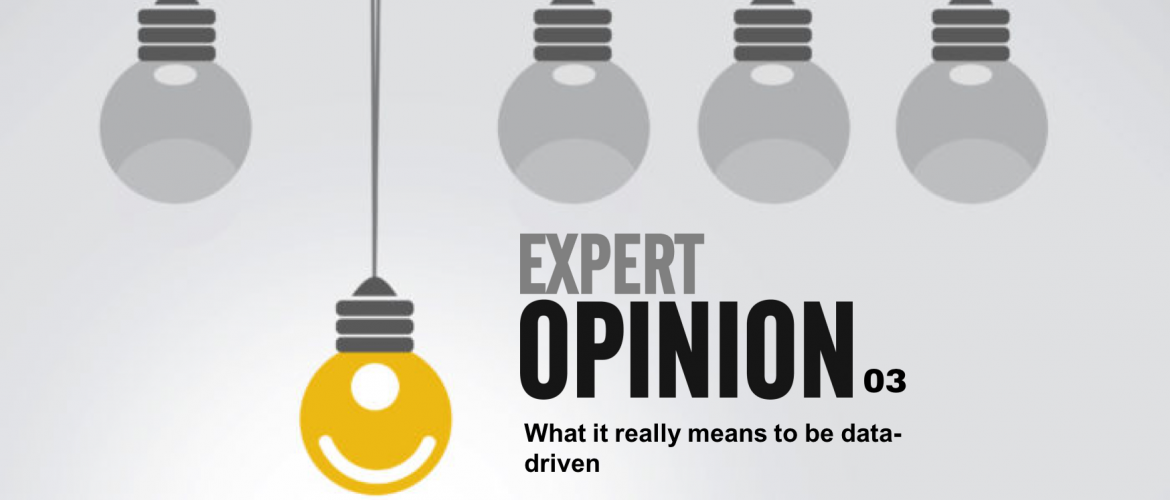“I was once asked by a CIO to help him present to his board, on why they wanted to become data-driven. After 5 minutes of my planned 10 minute presentation (that lasted about 30 minutes) a board member and I concluded that based on what we had heard outside that meeting, they didn’t want to become data driven– they wanted to become customer-driven.”
To be data-driven is a dangerous catch phrase. Data, or even technology, for its own sake without a clear line of sight to an outcome- social or business- is a terrible waste. Our data and analytics team have been hard at work in this challenge for a while; most recently exploring concepts such as storytelling, Information as a second language and data literacy.
These are all similar ideas; to train ourselves to stop talking about data and analytics, and about being data-driven, and talk more about how a business operates, behaves and changes (using better data). The emphasis is not on data (or analytics). More verb than noun…Get it?
So it was quite interesting to read an Opinion piece in the US print edition of the Wall Street Journal a few weeks ago, written by Steven Cohen and Matthew Granade of Point72, an investment firm, titled, “Models Will Run the World.” Let me go right to the point of the article with a key quote:
“A data-driven business collects and analyses data to help humans make better business decisions. A model-driven business creates a system built around continuously improving models that define the business. In a data-driven business, the data helps the business; in a model-driven business the models are the business.”
Is this a play on words and clever marketing? Well, a little ‘yes’ and a little ‘no’ fits rather well here.
Conceptually the argument is solid: We can use software to model decisions and responses and in some cases use AI and other techniques to help streamline parts of the ‘observe, orient, decide, act’ (see OODA) process for automatically learning from experience and updating the next decision. But AI is not really a silver bullet here, as a reader of the article might initially assume.
The best decision taken is next to useless if an organisation has little ability to change its ability to respond, or execute. So much of the hype today in IT is about using AI to automate some or all of a decision; not enough is being spent on ability to execute. And don’t forget there are many different kinds of decisions…
So then we are back to marketing. When we hear the word ‘analytics’ we tend to discuss data and its presentation to a user, to guide a decisions. This ends up putting the focus on visualization software, dashboards, and insights. These are described as different to classic reports. In reality they are different- they maybe based in forward looking data; but they are no different to a report in that these things just show data.
“Even if we were to report that ‘analytics’ was meant to include the decision process itself, it matters not. The market has settled on analytics as a piece of data and not a process at all. Analytics has become a noun, not a verb.”
So we are back to the bottom line: the previously noted decision or OODA loop is really, really interesting. If you explore the OODA loop (see some research and free webinar here: Data and Analytics at the Heart of Digital Business) you will realise that any successful organisation will have to perform across several areas:
- Data (the original issue, option, opportunity or thing that warrants looking at)
- Acumen (some kind of business or organisational awareness of what the thing is and to what degree any kind of response is needed)
- Analysis (where the options are explored, weighed, and a decision taken)
- Execution (the decision itself is followed through with action)
- Data (more data – did the outcome happen as expected? What is learned from the whole cycle?)
The market is currently fixated on the “analysis” or analytics aspect of this overall OODA loop cycle – with a big focus on AI and ML. But if you read the article, the author’s correctly sidestep the implication that all you need to do is purchase some AI. The models they provide as examples are far more than AI; they reach into simulation engines for how business processes, decisions, and actions will play out over time. This is not unlike Sim City meets Supply Chain – a very old idea indeed.
Either way, I happen to agree with the principle of the article – models in general (AI, machine learning, heuristics, simulation, even solvers) are very powerful inSet featured image helping solve problems and exploiting opportunity. We just need to avoid the tenancy to assume that one model will meet all purposes.
Author: Andrew White. Research VP, Gartner
Original Source: Gartner Blog


